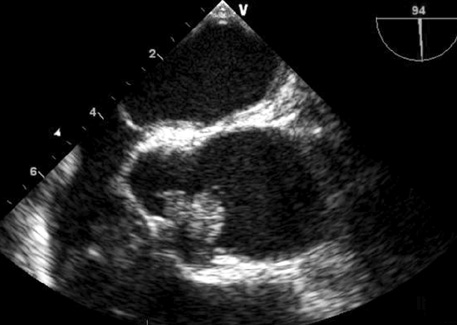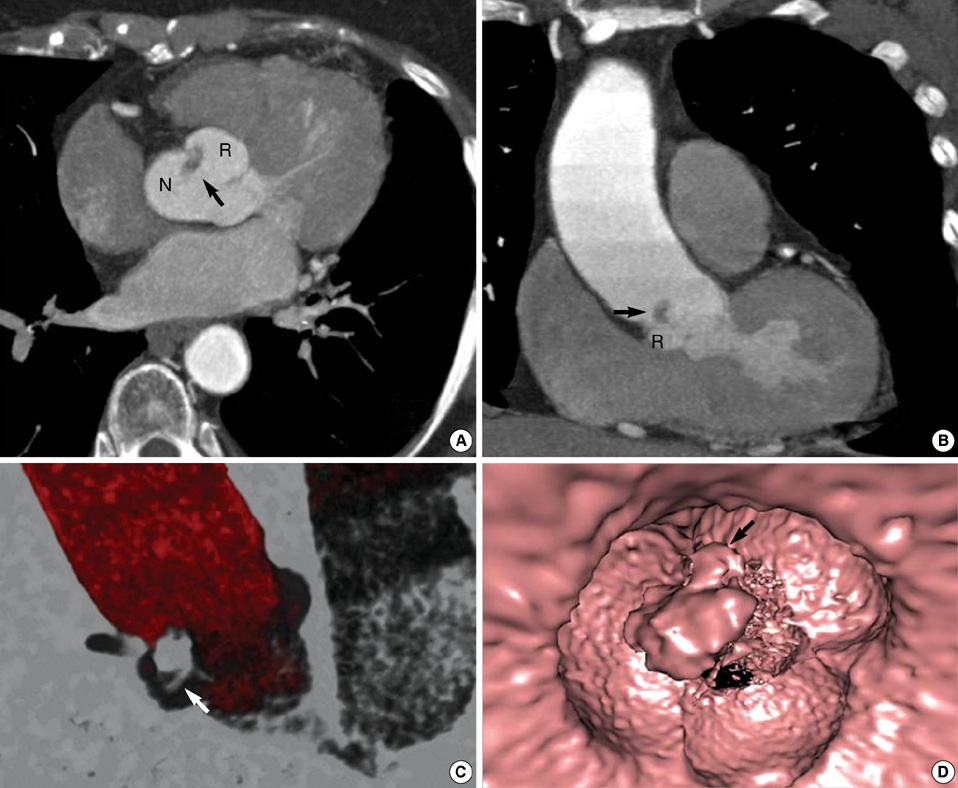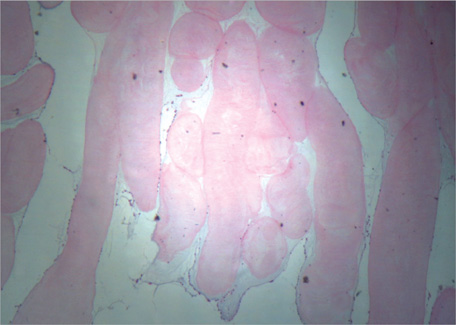J Korean Med Sci.
2010 May;25(5):809-812. 10.3346/jkms.2010.25.5.809.
Multidetector Computed Tomography Findings of a Papillary Fibroelastoma of the Aortic Valve: A Case Report
- Affiliations
-
- 1Department of Radiology, Dongguk University Ilsan Hospital, Dongguk University, Goyang, Korea. kjs7143@kornet.net
- 2Department of Thoracic and Cardiovascular Surgery, Dongguk University Ilsan Hospital, Dongguk University, Goyang, Korea.
- KMID: 1713972
- DOI: http://doi.org/10.3346/jkms.2010.25.5.809
Abstract
- Papillary fibroelastoma is a rare benign cardiac tumor that represents 10% of all primary cardiac tumors. Diagnosis is accomplished incidentally by echocardiography that is usually performed for another purpose. Most papillary fibroelastomas are asymptomatic, but the lesions are recognized as a cause of embolisms. To the best of our knowledge, there has been no case report of computed tomography findings of a papillary fibroelastoma. We report a case of a papillary fibroelastoma in a 78-yr-old woman who had dyspnea and chest tightness. Echocardiography revealed a small lobulated mobile echogenic mass attached to the aortic valve, and CT demonstrated a lobulated soft tissue density mass with a thin stalk at the sinotubular junction of the aortic valve.
MeSH Terms
Figure
Cited by 1 articles
-
Native Aortic Valve Thrombosis Resembling Papillary Fibroelastoma
Minkwan Kim, Suk-Hyun Kim, Sang Yi Moon, Eu Gene Jeong, Eui Han Jung, Hwa Seong Nam, Jae-Hyuk Choi, Kyungil Park
J Cardiovasc Ultrasound. 2014;22(3):148-150. doi: 10.4250/jcu.2014.22.3.148.
Reference
-
1. Tazelaar HD, Locke TJ, McGregor CG. Pathology of surgically excised primary cardiac tumors. Mayo Clin Proc. 1992. 67:957–965.
Article2. Burke A, Virmani R. Tumors of the heart and great vessels. Atlas of tumor pathology: fasc 16, ser 3. 1996. Washington, DC: Armed Forces Institute of Pathology;1–98.3. Edwards FH, Hale D, Cohen A, Thompson L, Pezzella AT, Virmani R. Primary cardiac valve tumors. Ann Thorac Surg. 1991. 52:1127–1131.
Article4. Grebenc ML, Rosado de Christenson ML, Burke AP, Green CE, Galvin JR. Primary cardiac and pericardial neoplasms: radiologicpathologic correlation. Radiographics. 2000. 20:1073–1103.
Article5. Sparrow PJ, Kurian JB, Jones TR, Sivananthan MU. MR imaging of cardiac tumors. Radiographics. 2005. 25:1255–1276.
Article6. Wintersperger BJ, Becker CR, Gulbins H, Knez A, Bruening R, Heuck A, Reiser MF. Tumors of the cardiac valves; imaging findings in magnetic resonance imaging, electron beam computed tomography and echocardiography. Eur Radiol. 2000. 10:443–449.
Article7. Shiraishi J, Tagawa M, Yamada T, Sawada T, Tatsumi T, Azuma A, Shimada Y, Yaku H, Kitamura N, Nakagawa M. Papillary fibroelastoma of the aortic valve: evaluation with transoesophageal echocardiography and magnetic resonance imaging. Jpn Heart J. 2003. 44:799–803.8. Araoz PA, Mulvagh SL, Tazelaar HD, Julsrud PR, Breen JF. CT and MR imaging of benign primary cardiac neoplasms with echocardiographic correlation. Radiographics. 2000. 20:1303–1319.
Article9. Ramesh MG, Ijaz AK, Chandra KN, Nirav JM, Balendu CV, Terrence JS. Cardiac papillary fibroelastoma: A comprehensive analysis of 725 cases. Am Heart J. 2003. 146:404–410.10. Grinda JM, Couteil JP, Chauvaud S, D'Attellis N, Berrebi A, Fabiani JN, Deloche A, Carpentier A. Cardiac valve papillary fibroelastoma: surgical excision for revealed or potential embolization. J Thorac Cardiovasc Surg. 1999. 117:106–110.
Article11. Frederick JS. Ramzi SC, Vinay K, Tucker C, editors. The Heart. Robbins pathologic basis of disease. 1999. 6th ed. USA: W.B. Sanders Company;590–591.12. Klarich KW, Enriquez-Sarano M, Gura GM, Edwards WD, Tajik AJ, Seward JB. Papillary fibroelastoma: Echocardiographic Characteristics for Diagnosis and Pathologic Correlation. J Am Coll Cardiol. 1997. 30:784–790.
Article13. al-Mohammad A, Pambakian H, Young C. Fibroelastoma: case report and review of the literature. Heart. 1998. 79:301–304.
Article
- Full Text Links
- Actions
-
Cited
- CITED
-
- Close
- Share
- Similar articles
-
- Aortic Valve Papillary Fibroelastoma Triggering Chest Pain: A case report
- Aortic Valve Papillary Fibroelastoma: Report of 1 Case
- Papillary Fibroelastoma of the Aortic Valve: Discovered by Chance with Intraoperative Transesophageal Echocardiography: A case report
- Native Aortic Valve Thrombosis Resembling Papillary Fibroelastoma
- Multiple Cardiac Papillary Fibroelastoma of the Aortic Valve





